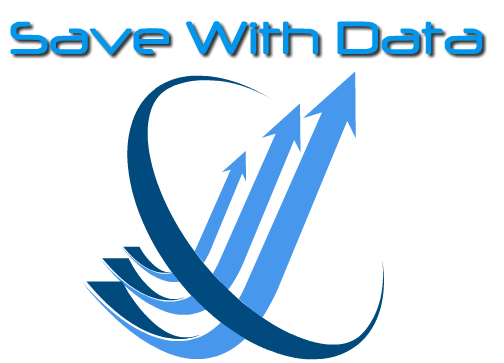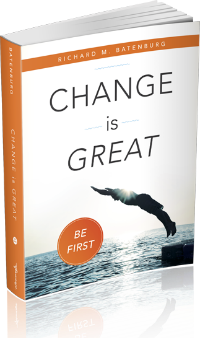
by Bill Decker | Aug 4, 2015 | Save With Data
Really when we think about what businesses are trying to do if we strip back all the mission statements and values etc., kind of what they’re there for is to either make money or save money. They tend to be pressured to do one or the other or in some cases, both depending on where the business is in its marketplace and its competitive construct, etc.
This is where business stakeholders will often initiate ideas that lead to data science because they’re looking for answers that they can’t find at the moment. They can’t find it intuitively, they don’t have enough data to find it or maybe they have sufficient data or they suspect they may have sufficient data, but they can’t find the insights or the answers that they’re looking for.
Two real examples of what was done in this space. They both actually are retail examples and retail is good because we all understand how retail works, at least at a superficial level once you dig beneath the surface, there are nuances we could never imagine. One of the big problems around retail is a little thing called shrinkage.
Now I’ll avoid the obvious shrinkage jokes and simply say that shrinkage is the term used in retail for goods being stolen, going missing, magically ending up in the pockets of the employees sometimes. Essentially it’s stock loss, and stock loss has a direct impact on cost because obviously this is inventory that you’re purchasing, that you’re spending money on but not getting any money back from. And Big Data can help.
Focus on shrinkage is a big driver in most retailers and certainly very much falls in the category of saving money. All retailers do a lot of work around shrinkage already. They have big teams in some cases that deal with it purely but in this case, the business goal was to understand the shrinkage drivers and to validate some hypotheses about why shrinkage is happening, and then to actually reduce the lost due to shrinkage, so to provably show that we can find the source of shrinkage, make some changes and fix it. Also, within this particular organization, their analytical sophistication was low so they wanted some easy-to use tools, and they wanted the answers, etc.

by Bill Decker | Jul 7, 2015 | Business Intelligence, Measuring Results
Since Robert Kaplan and David Norton popularized the “balanced scorecard” approach to managing business performance in 1996, senior executives have eagerly embraced its prescription for measurable objectives and key performance indicators as the answer to all business problems. At the top of the pyramid, enlightened corporate leaders understand the need for strategic direction and solid KPIs that demonstrate progress toward strategic goals,
facilitated by comprehensive business intelligence. But too often, the connection isn’t made between “big picture” strategy and the activities of front-line employees further down the pyramid.
Today, corporate leaders live by robust sets of metrics that track their contributions to profitability, customer satisfaction, and employee retention. Their employees likewise focus on their individual numbers for sales, customer response time, and professional development. Unfortunately, because they may not really understand the relationship between their daily performance and their company’s strategic direction, much can get lost in translation. Widely disseminated business intelligence can be the missing link.
Strategy vs. Metrics
In a cable company call center, for example, customer care agents pay close attention to statistics like time spent with each customer and the abandon rate for incoming calls. These metrics are factors in a company-wide strategic pursuit of happier, more loyal customers. But without business intelligence that illustrates the relationship between customer loyalty strategy and call center metrics, progress can stall. Even the most conscientious employee may rush a customer call to meet a time target, ultimately damaging the relationship that is the core of business success. Business intelligence helps all employees see both the forest and the trees.
Your Business Intelligence Advisor/Knowledge Broker
For many companies, the most effective way to bridge the divide between the top and bottom of the organization chart is with assistance from an independent business intelligence advisor skilled in communicating with people at all professional levels. An objective consultant can bring a fresh set of eyes to longstanding issues, acting as a knowledge broker between the executive suite and employees in the field. The resulting business intelligence tools will give everybody the information they need to improve. Look for an advisor who understands business performance and the technical tools available to resolve issues, and who is experienced in breaking down organizational barriers of culture, resources and education.
Share the Wealth: Business Intelligence for All
Limiting your view of business intelligence to performance measurement will limit its impact. Executives are often nervous about distributing corporate-level data such as risk management and financial reports too broadly. While there may be legitimate reasons for such concerns, they should be weighed against the value of building the most well-informed workforce possible. An organization’s leaders know what happened and when, but the people with first-hand knowledge of why it happened are usually in field offices. Making your organization’s business intelligence widely available at all levels lets the C-suite learn from the field and vice versa. Isolating information limits your company’s ability to get smarter.
To learn more about business intelligence software, please visit www.cliintel.com or e-mail askcliintel@cliintel.com.

by Bill Decker | Jun 5, 2015 | Business Intelligence, Measuring Results
How dirty is your data? As business intelligence experts know, the answer to that question can have a tremendous impact on your organization’s efficiency. And although it may sound unsavory, the truth is that unreliable information, aka dirty data, is a common business intelligence problem for large companies.
Dirty data becomes a problem as businesses grow over time. As stores, offices, warehouses, and plants are established and enhanced, data systems multiply. Lack of standardization among these systems may allow users to produce inconsistent, invalid, or duplicated information, or simply fail to enter critical information.
While it may not have been a practical or intentional choice, lack of standardization allows for the adoption of different business rules and data systems across the company. Sites may use different sets of codes to represent similar products, services, or entities such as vendors, customers or lines of business. Data systems in use at some locations may collect information from users into free-form entry fields instead of using a “pick list” of options, increasing the likelihood of incorrect entries or multiple versions of a single value resulting from misspelling and typos. Furthermore, these systems may allow certain values such as names, addresses, or dates to be unexpectedly overwritten, limiting the ability to track historical events or create accurate business intelligence trend reporting.
When dirty data finds its way into reports, the results can be inaccurate and unusable, with important information distorted, excluded, or even multiplied many times over. When this happens, the hunt for meaningful, actionable business intelligence can become a laborious, never-ending quest.
Companies may not be aware of the full extent of their business intelligence problems, or may accept them as an unfortunate fact of life. Even if you know where the problems lie, you may have to follow elaborate and repetitive procedures to gather the business intelligence you need to succeed. Dirty data makes it difficult to consolidate and measure business results. Inaccurate and missing information prevents decision-makers from getting answers to their important questions about your business.
To evaluate the health of your data, consider the following business intelligence questions:
- Do you find yourself doing the same repetitive tasks each month to compile clean data?
- Is it difficult to answer questions about your business using your data?
- Do you regularly follow extensive procedures to retrieve and consolidate companywide data?
- Do you spend too much time analyzing your business and not enough on decisions that will move the company forward?
If your best analysts are spending the majority of their time compiling the data required to create reports, and the results always arrive at the last minute or past deadlines, it’s time to look into the role of business intelligence in your organization. Tackle the problem head-on with an experienced business intelligence expert who can identify and address dirty data issues, homogenize data across different systems and standards, and consolidate company-wide data so it is accessible and reportable whenever you need it. You’ll be on your way to creating a more strategic and action-oriented environment where those over-worked analysts can focus their efforts on analyzing results instead of preparing them.
To begin the process of addressing data quality, your business intelligence partner will need to understand your organization’s goals. Where do you want to be in five years? What has been keeping you awake at night? Identifying strategic priorities will help you outline a plan which focuses on the most relevant and critical information.
To establish high-quality, reliable data, the business intelligence team will filter, merge, standardize, and validate records, all with the end goal of simplifying life for the end user. But creating a great business intelligence solution involves much more than database management and coding. The process will likely involve identifying areas where company standards and business rules can be added or improved, and getting consensus from stakeholders to define the rules that will prevent future problems.
Working with the right business intelligence partner, you’ll ultimately find the treasure that every large business dreams of: a centralized, authoritative source of data, married to a business intelligence system that analyzes your business to pinpoint critical problems and highlight favorable opportunities, and then reports the results you need to measure progress and plan for the future.
Business Intelligence, Operational Efficiency and Dirty Data
by Paul Ousterhout, Business Support Expert
To learn more about business intelligence, visit www.cliintel.com or e-mail askcliintel@cliintel.com









Recent Comments